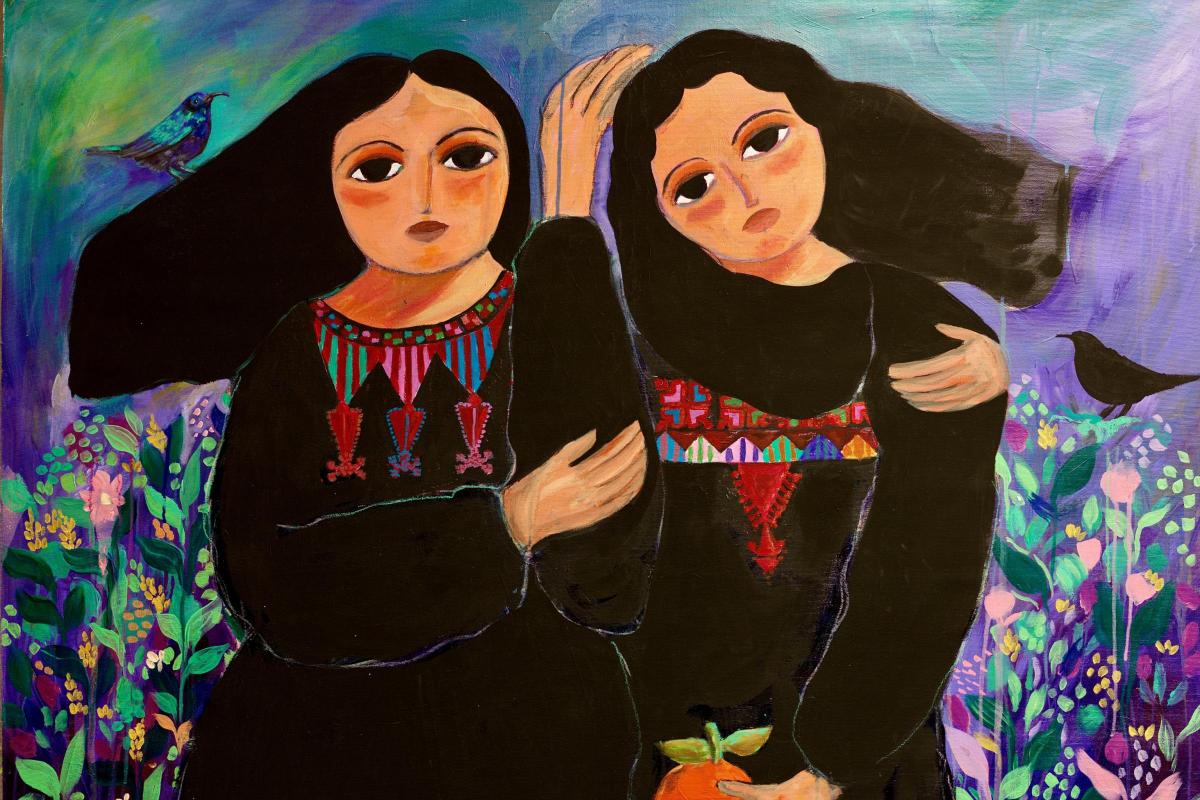Europe’s first museum of contemporary Palestinian art will open in Edinburgh this week.
Palestine Museum in Scotland will open on Dundas Street in the city on Saturday, May 17, and promises to “challenge perceptions, foster empathy, and celebrate the richness of Palestinian culture”.
It will join an existing museum in Woodbridge, Connecticut, USA and is the first of its kind in all of Europe.
Faisal Saleh, founder of Palestine Museum, tells The Herald: “We have been looking to create a satellite in Europe and initially we tried to do it in Ireland.
Read More:
“We tried to take over the space of the Israeli embassy that was closed in Dublin, but we got a lot of pushback from the owners of the building.
“London is very expensive and we would need a significant facility there because of the large size of the city and the population, so it would be a more complicated project.
“Edinburgh is a really great cultural centre, I came to check out possible sites and when I looked at the space we ended up with I found it very compelling.
“We wanted to be in the heart of the art district and we couldn’t have gotten any closer than the spot that we found – that clinched the decision for us to place the museum in Edinburgh.
“There’s also a very strong solidarity movement with Palestine in Scotland in general, and in Edinburgh and Glasgow in particular, and that’s also a factor into placing the museum here because we are an all-volunteer organisation and the museum will be run and operated by local volunteers.
“We are going to be exhibiting a wide range of Palestinian artwork which includes paintings and a number of sculptures.
Hamada Elkempt, Under Observation, 2024 (Image: Hamada Elkempt) “We have also some special artwork from Gaza and we will be showing some short documentary films as well.
“We’ve tried to be very innovative and present things in a different way, we’ve got a map of Palestine from 1948 on the floor, it’s a great conversation piece for anybody that walks in.
“But also for Palestinians, it’s a very emotional item because they can locate their village, where it was in Palestine, and have their picture taken and send it to their relatives.
“It kind of connects Palestine to the artwork that’s on the walls.”
Mr Saleh’s father was a landowner and farmer in Salama in Palestine, but the family fled in 1948 as part of what Palestinians call the Nakba or ‘catastrophe’ in which more than 700,000 people were expelled from their homes.
He accompanied his parents to the village in 1968, but they were so overcome with grief on seeing their former home they left after only a few minutes.
Today what used to be the village is the Kfar Shalem neighbourhood in Tel Aviv.
Mr Saleh says: “As you may have noticed, there’s been a concentrated effort by certain forces not friendly to Palestine to try and to silence the Palestinian voices, to cancel as many events that are supporting Palestine as possible and, in general, not to allow the Palestinian narrative to be presented.
“It’s very critical at this time, given those efforts that have been going on, that we have the ability to amplify Palestinian voices and bring the Palestinian narrative to people in Scotland and in Europe.
“Palestinians have been dehumanised by the corporate media.
“There are major media organisations, which I don’t really want to mention specifically, that are biased in their reporting and they, in a way, are complicit in what’s going on in Gaza because they are not presenting the facts as they happen there.
“That’s why it’s important for the Palestinians to have a presence here in Europe.
“Solidarity groups do a good job in talking up the Palestinian narrative but the museum as an art establishment, as a permanent presence, is going to have a different kind of an impact.
“We are indigenous Palestinians and we’re telling our own story.
“My family lived in a small village outside of Jaffa, they had 10 children and in 1948 they became refugees – they lost everything they had.
“I’m a living example of the Nakba and what happened, we have first-hand experiences we can share with people.
“People showing solidarity is still important, but it’s a different dimension – how can someone stand in front of me and argue whether the Nakba happened or not? I can just tell them my life story.”
The gallery is not, however, a political project.
Nabil Anani, In Pursuit of Utopia, 2020 (Image: Ziad Anani/Zawyeh Gallery) The space will be used to present contemporary Palestinian art, moving the narrative away from war and occupation.
Mr Saleh explains: “There are not a lot of gory scenes and scenes of violence whatsoever. It’s just regular, the kind of art you’d see in a typical modern art museum. We are trying to show that Palestinians are human, just like everyone else.
“We don’t want to be represented as the helpless victims, nor as terrorists.
“We are not the helpless victim, we have a lot of talented people who are very successful in their endeavours just like any other people, and we’d like the world to know that.
“There’s nothing but presenting artwork to get that point across, art is a more effective way to communicate things.
“In general, we really are not very political. When it comes to Gaza you can’t really ignore that but in general it’s things like that big landscape painting there – it’s just a beautiful landscape from Palestine.
“Art speaks to the heart and creates emotion in people, which makes it easier for people to understand and empathise.”
Palestine Museum in Scotland opens on May 17 at 13a Dundas Street, Edinburgh. It will be open Wednesday to Sunday every week.
